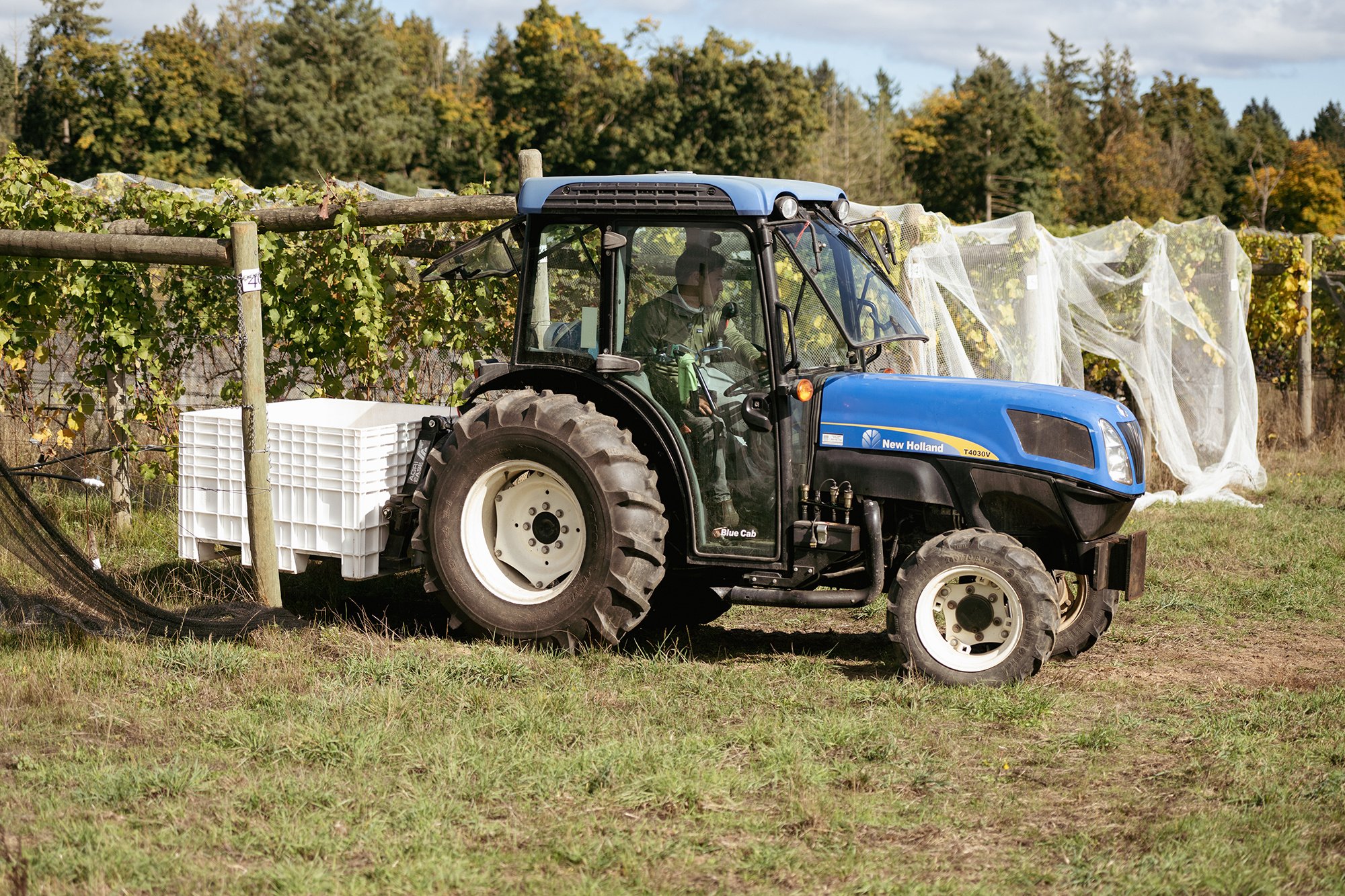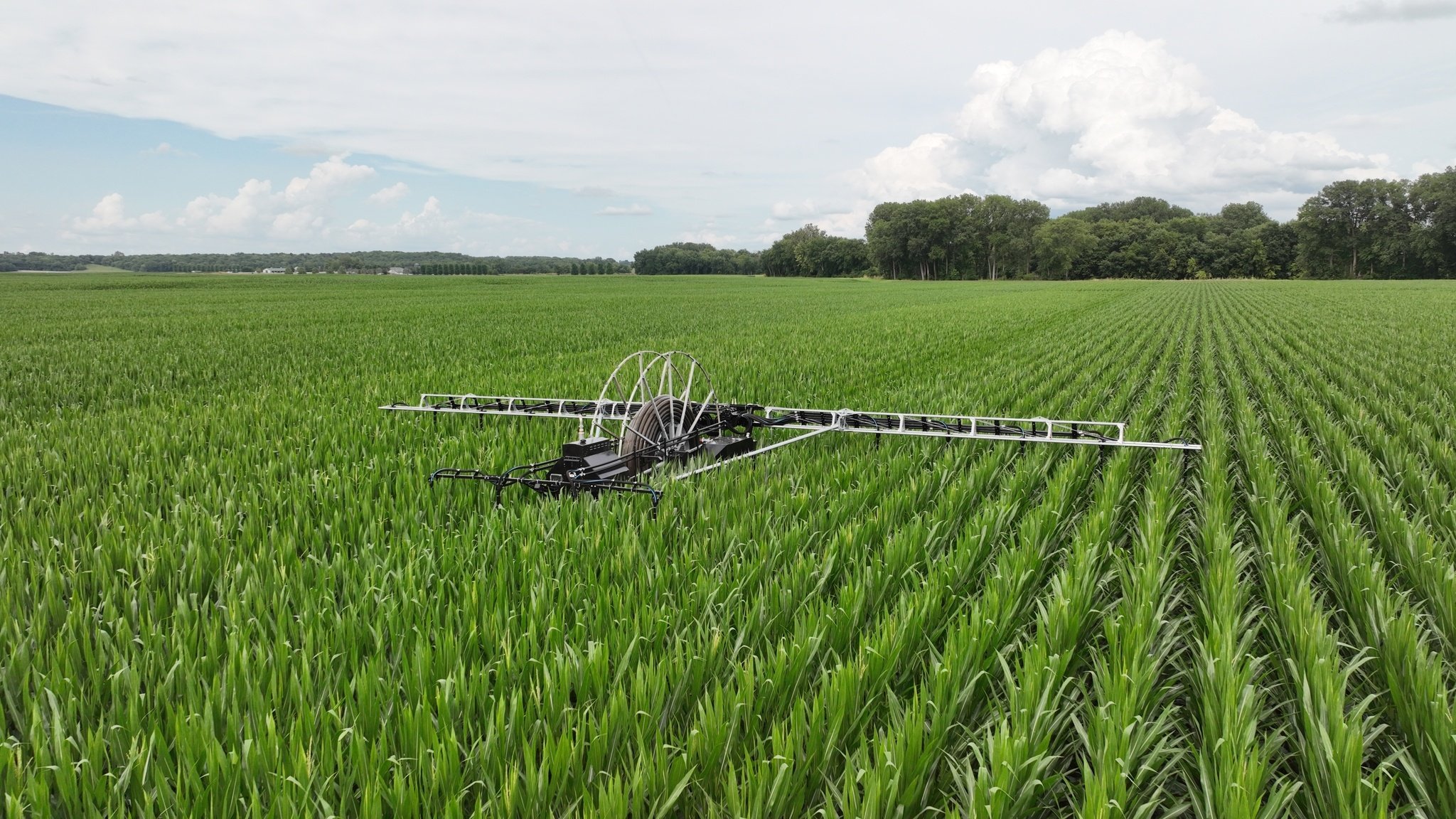How Bella Rosa Orchards is Leveraging an Orchard Platform to Increase Labour Productivity
Technology is transforming sectors across British Columbia, empowering industries to stay competitive, productive and future-ready. In this success story series, we’re exploring how B.C. farms are leveraging innovative technologies to solve challenges, drive growth and unlock new opportunities.
B.C. farmers looking to grow their businesses amidst rising costs have been receiving support through the BC On-Farm Technology Adoption Program (BCOFTAP) which is helping them access new technologies – such as robotic and automated equipment, farm management software, and digital sensors – that boost production, efficiency, and profitability.
During its first intake in 2023, BCOFTAP awarded a total of $2 million across 54 projects to support farmers and producers in investing in new equipment. A second intake, recently completed in 2024, also provided $2 million in funding to 31 projects, with a focus on labour-saving technologies.
The program is delivered by Innovate BC and funded by the governments of Canada and British Columbia, through the Sustainable Canadian Agricultural Partnership, a five-year (April 1, 2023, to March 31, 2028) $3.5-billion investment by federal, provincial, and territorial governments aimed at strengthening the competitiveness, innovation, and resilience of Canada’s agriculture sector. This includes $1 billion in federal programs and activities and a $2.5-billion commitment that the partnership commitment is cost-shared 60 per cent federally and 40 per cent provincially/territorially for agricultural programs that are designed and delivered by provinces and territories.
Through the first intake of BCOFTAP, Bella Rosa Orchards, a family-owned fruit farm located in the Glenmore Valley region of Kelowna, B.C., received $85,706 to support them in purchasing an electric orchard platform. The platform, with a full project cost of approximately $131,856 was adopted with the goal of reducing labour costs and increasing worker efficiency.

Labour is the single highest operating expense for farms like Bella Rosa in the Okanagan Valley’s tree fruit industry. Producing top-quality fruit requires significant manual labour, but traditional fruit harvesting, pruning and crop thinning methods present challenges. For upper canopy activities, workers rely on ladders and canvas sacks strapped to their shoulders, increasing worker fatigue, and heightening the risk of injuries and falls. This method also impacts fruit quality due to damage caused when moving heavy bags down ladders into fruit bins.
To address these challenges, Bella Rosa Orchards utilized the program funding to adopt a mobile, self-steering, battery-powered, working platform. The platform is designed for ultra-high-density orchards, featuring a self-elevating and self-levelling platform that can support up to six workers for harvesting, pruning and thinning. Its adaptive automation features also ensures versatility, making it well-suited for the hilly terrain of the Okanagan Valley. Through integrating this technology into their operations, Bella Rosa Orchards aimed to reduce labour costs and improve long-term sustainable output.

We sat down with Sam DiMaria, the farm’s owner, to learn more about their farm and the challenges they’ve faced, and how adopting new technology with the support of the program has impacted their operations.
Tell us about your farm, what do you do?
Sam: Alongside my wife and son, and with the support of a dozen seasonal workers, I manage approximately 62 acres, mainly growing apples of various varieties. We also cultivate over 9 acres of pears to diversify our product line. In the last 5 years, we’ve expanded into sweet cherries, and we grow a few peaches and table grapes. This business is my passion. If I didn’t love it, I wouldn’t be here.
What is the challenge or opportunity you faced that technology could support?
Sam: The tree fruit industry in the Okanagan Valley, particularly apple farming, has been facing significant challenges. Over the past decade, input costs have steadily risen, but since COVID, these costs have skyrocketed. The cost of growing fruit here is becoming unsustainable, and as farmers, we must find ways to either increase revenue or reduce costs. The most logical approach is to explore emerging technologies that can help lower our expenses.
Labour is our biggest input cost, and in recent years, it has risen drastically. This increase is due to societal changes such as tying minimum wage to the cost of living. To stay competitive, we must find ways to reduce labour costs while maintaining efficiency. I’ve traveled extensively—from Auckland, New Zealand to Bolzano, Italy—to study how other apple-growing regions adopt new technologies. My focus has been on mobile platforms, which function like scissor lifts but can support multiple workers. Many of these platforms are autonomous, eliminating the need for orchard ladders. These platforms also come with a harvesting system that includes conveyor belts, allowing workers to pick fruit efficiently without carrying heavy bags or climbing ladders. This has been a game-changer in improving productivity, safety, and worker well-being.
How has the BCOFTAP funding helped your farm?
Sam: While I had known about this technology for years, acquiring it was cost-prohibitive, with prices well into the six figures. It remained a dream until I learned about government funding that could assist with the purchase. The financial support tipped the scales just enough for me to justify the investment. I had to borrow some money, but with the government’s help, I was able to move forward. Beyond benefiting my farm, I hope to demonstrate the value of this technology to other growers in the region – showing that it can deliver a strong return on investment.
How has the technology you adopted impacted your operations?
Sam: These mobile autonomous platforms have completely transformed our farm. The biggest improvement has been in efficiency. By eliminating ladders and heavy picking bags, you can increase productivity in tasks like pruning, thinning, and harvesting by up to 35%. You can also make significant savings anywhere between 30% to 50% depending on the activity. The platforms allow workers to prune from a stable surface using electric pruners, making the job easier and safer.
Beyond efficiency, worker satisfaction has dramatically improved. The job is now less physically demanding – no more climbing ladders or carrying 40-pound picking bags for hours. We’ve added shade umbrellas and a water cooler to the platform, making summer work more comfortable. Workers are happy, and when workers are happy, the quality of work improves.
What has been the biggest benefit of this technology to your farm?
Sam: The greatest benefit of this technology is how much easier and more pleasant it has made the work. Labour costs – our biggest expense – have been significantly reduced. This not only helps our bottom line but also creates a more enjoyable, safe, and efficient working environment. This technology is paving the way for further advancements, making the future of apple farming more sustainable.
Additionally, the platform we use is fully electric, meaning there are no carbon emissions. This is a big win for the environment. It’s also a win for the government, which is supporting real, practical solutions for the agriculture sector.
What does adopting this technology mean for your customers/consumers?
Sam: Consumers are becoming more aware of where their food comes from – not just how it’s grown but also the conditions for the workers producing it. Sustainable farming goes beyond environmental stewardship; it includes ensuring fair treatment and safe working conditions for farmworkers.
This technology allows me to enhance that social aspect of sustainability. My workers are happier, they work in safer conditions, and they are treated with dignity and respect. Consumers can feel confident that the fruit they purchase from our farm is not only grown sustainably but also harvested in a socially responsible manner.
How does new technology or innovation support the farming sector here in B.C.?
Sam: Agriculture worldwide is moving in one direction – toward innovation and technology. Countries such as those in Europe and South Africa, as well as Australia, New Zealand, Chile, and Brazil are adopting new solutions to make farming more sustainable. If we want to stay competitive in B.C., we must do the same.
Emerging technologies, including AI, will play a crucial role in making farming more efficient and cost-effective. However, technology adoption requires investment and knowledge. Farmers must be willing to learn and embrace these changes, and government support can help us transition successfully.
Ultimately, technology is the key to ensuring that farming remains financially viable, environmentally sustainable, and competitive in a global market.
To learn more about Bella Rosa Orchards and their operations, visit www.bellarosaorchards.com/
To learn more about the BC On-Farm Technology Adoption Program, visit www.innovatebc.ca/programs/bc-on-farm
To learn more about the Sustainable Canadian Agricultural Partnership, visit www.agriculture.canada.ca/en/department/initiatives/sustainable-canadian-agricultural-partnership

More About Us
You May Also Like
These Related Stories

How Unsworth Vineyards is Harnessing Workforce Management Software to Optimize Operations through the BC On-Farm Technology Adoption Program

How Von Hardenberg Farms is Utilizing an Autonomous Irrigation System to Reduce Costs and Improve Yields


